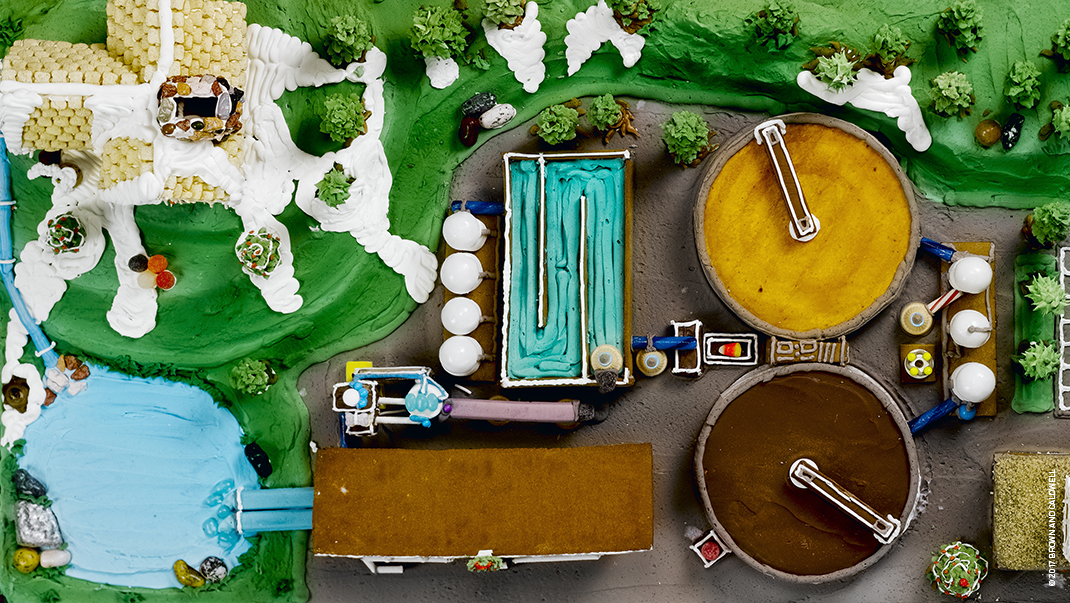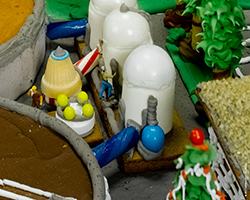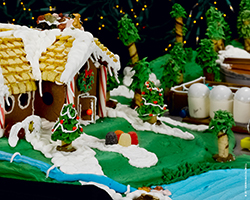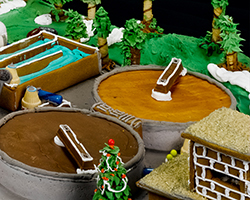If you come across this gingerbread structure in a forest, you can bet there’s clean water and responsible stormwater runoff practices in place nearby. That’s right, Brown and Caldwell’s newest project is an edible wastewater treatment facility with candy cane pipes and chocolate influent.
The Gingerbread WWTP has been assessed by BC engineers for functionality and aesthetics, and they even made sure it met all odor requirements. (Spoiler alert: It smells like gingerbread!) While some of the pipes (candy canes) are not sized appropriately, the plant is doing a good job of converting the (chocolate) influent found in the primary clarifier to potable water.
The gingerbread WWTP had a qualified design-builder, Sean Porter, a BC supervising scientist who paid his way through college and graduate school working as a pastry chef. “I thought it would be fun to create a sewer treatment plant with advanced purification, mirroring our San Diego office project focus,” Porter said.
The final effluent from this modern wastewater treatment plant “complete with tertiary clarifiers, chlorine contact basin, output to Title 22 standards, microfiltration, advanced disinfection, and reverse osmosis (RO)” is discharged to a local surface waterbody (hence the blue pond) for later withdrawal for the cereal-roofed gingerbread house’s use.
Decorated with icing and all the classic candy elements, and built over a period of several weeks, one building at a time, the uniqueness of the complex WWTP meant that a lot of creativity came into play. Pirouline cookies serve as the trunks of the trees and hard-to-find candy cigarettes function as the final RO advanced water purification system.





